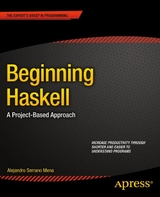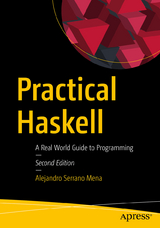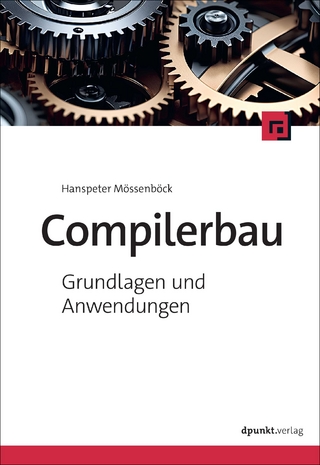Beginning Haskell
Apress (Verlag)
978-1-4302-6250-3 (ISBN)
- Titel erscheint in neuer Auflage
- Artikel merken
Functional programming is gathering momentum, allowing programmers to express themselves in a more concise way, reducing boilerplate and increasing the safety of code. Indeed, mainstream languages such as C# and Java are adopting features from functional programming, and from languages implementing that paradigm. Haskell is an elegant and noise-free pure functional language with a long history, having a huge number of library contributors and an active community. This makes Haskell the best tool for both learning and applying functional programming, and Beginning Haskell the perfect book to show off the language and what it can do.
Takes you through a series of projects showing the different parts of the language.
Provides an overview of the most important libraries and tools in the Haskell ecosystem.
Teaches you how to apply functional patterns in real-world scenarios.
Alejandro Serrano Mena is working towards his PhD thesis inthe Software Technology group in Utrecht University. He is passionate forfunctional programming, and has been coding Haskell for personal andprofessional projects for more than five years. During his college years he wasactive in an association promoting functional languages among students, givingtalks and helping programmers get started in the functional paradigm. In 2011he took part in the Google Summer of Code program, enhancing the Haskellplug-in for the popular development environment Eclipse. His current positioninvolves research for enhancing the way in which developers get feedback andinteract with strong type systems such as Haskell's.
Part I: First Steps
1. Going Functional
2. Declaring the Data Model
3. Reusing Code through Lists
4. Using Containers and Type Classes
5. Laziness and Infinite Structures
Part II: Data Mining
6. Knowing Your Clients Using Monads
7. More Monads: Now for Recommendations
8. Parallelizing the Execution
Part III: Resource Handling
9. Dealing with Files: IO and Conduit
10. Builders and Parsers
11. Safe Database Access
12. Web Applications
Part IV: Domain Specific Languages
13. Strong Types
14. Attribute Grammars
Part V: Engineering the Store
15. Documenting, Testing, and Verifying
16. Architecting Your Application
Appendix A
Appendix B
| Zusatzinfo | 44 Illustrations, black and white; XX, 428 p. 44 illus. |
|---|---|
| Verlagsort | Berlin |
| Sprache | englisch |
| Maße | 178 x 254 mm |
| Gewicht | 804 g |
| Themenwelt | Mathematik / Informatik ► Informatik ► Programmiersprachen / -werkzeuge |
| Mathematik / Informatik ► Informatik ► Software Entwicklung | |
| Informatik ► Theorie / Studium ► Compilerbau | |
| Schlagworte | Haskell (Programmiersprache) |
| ISBN-10 | 1-4302-6250-8 / 1430262508 |
| ISBN-13 | 978-1-4302-6250-3 / 9781430262503 |
| Zustand | Neuware |
| Haben Sie eine Frage zum Produkt? |
aus dem Bereich





